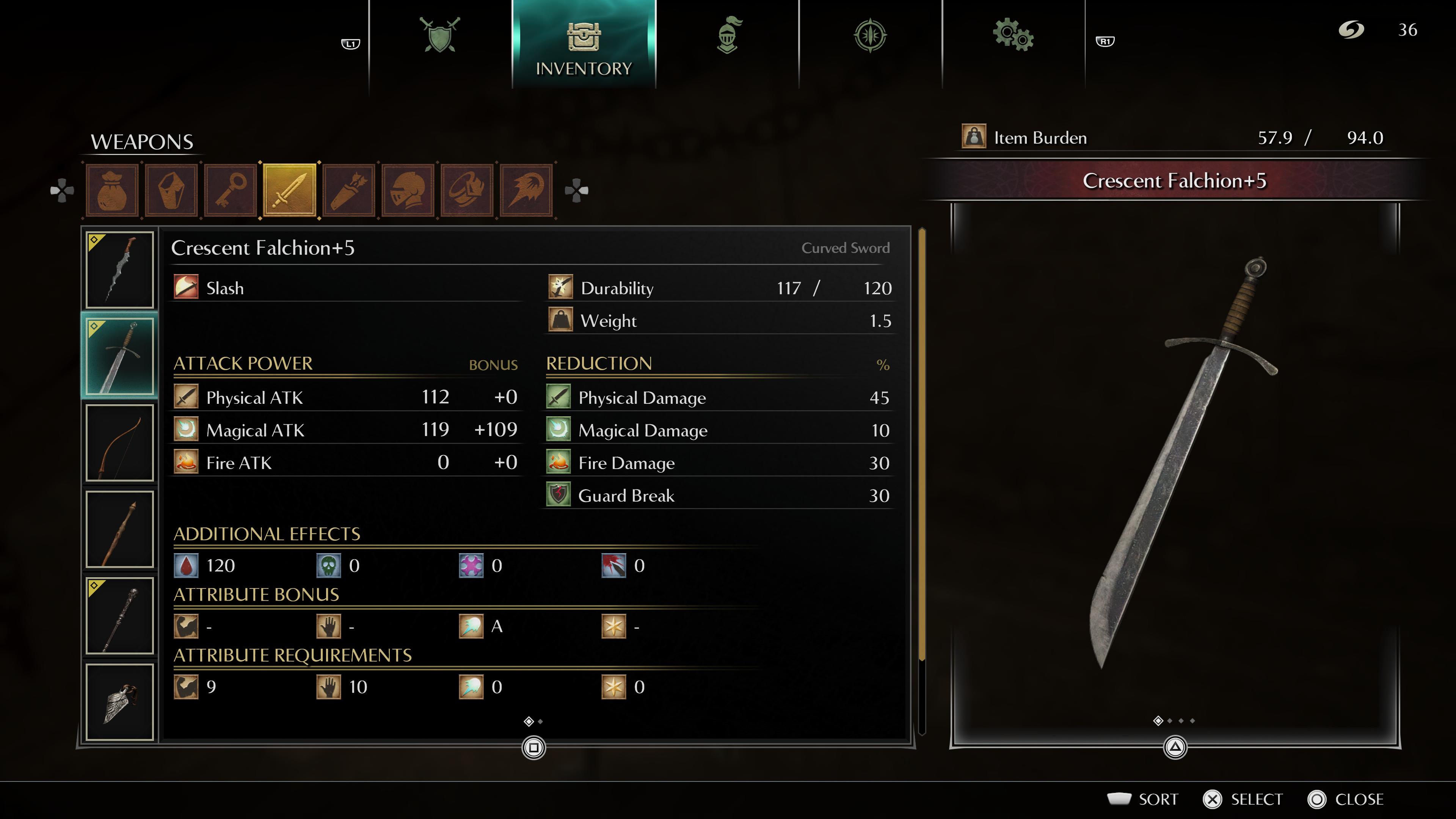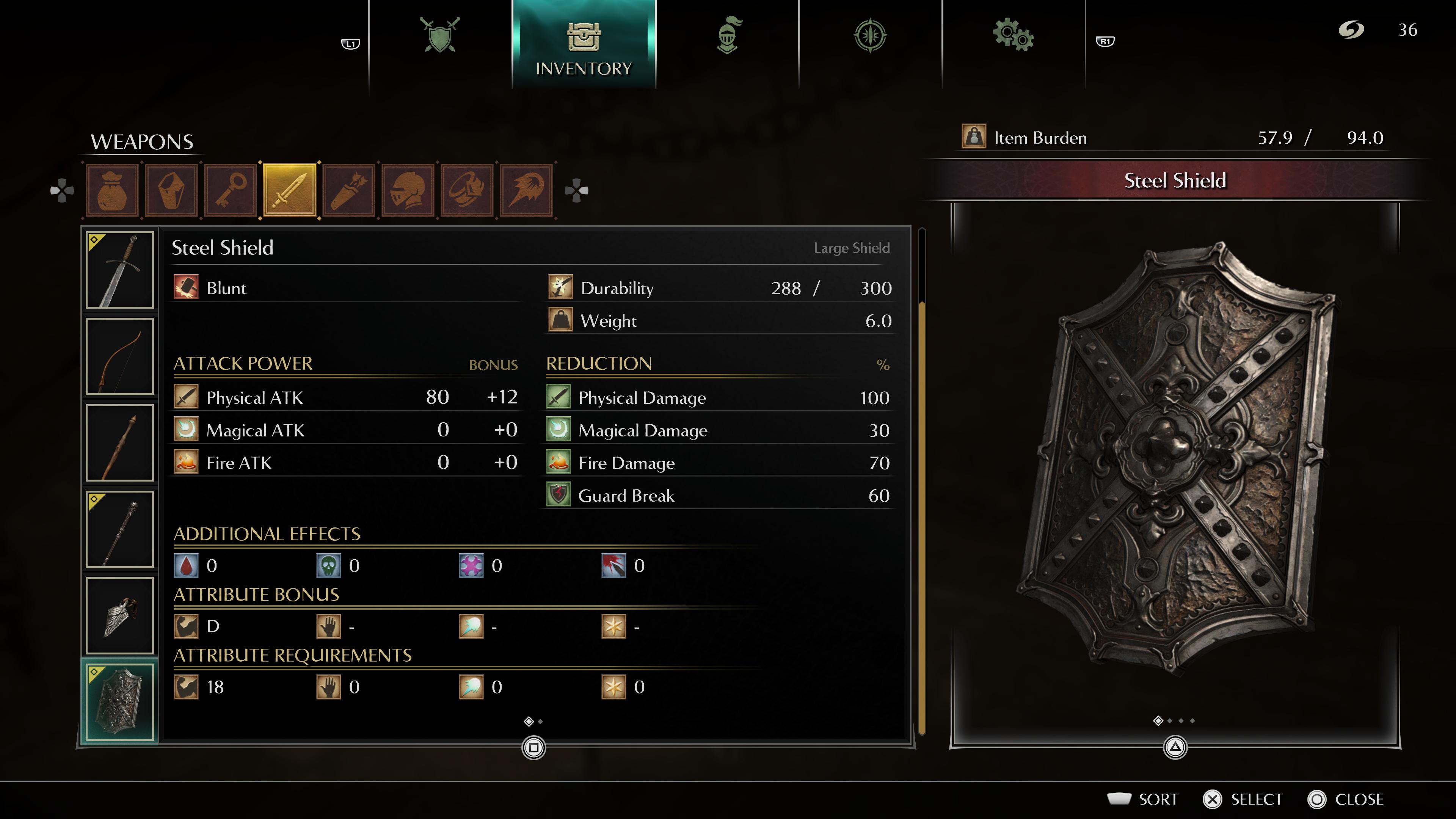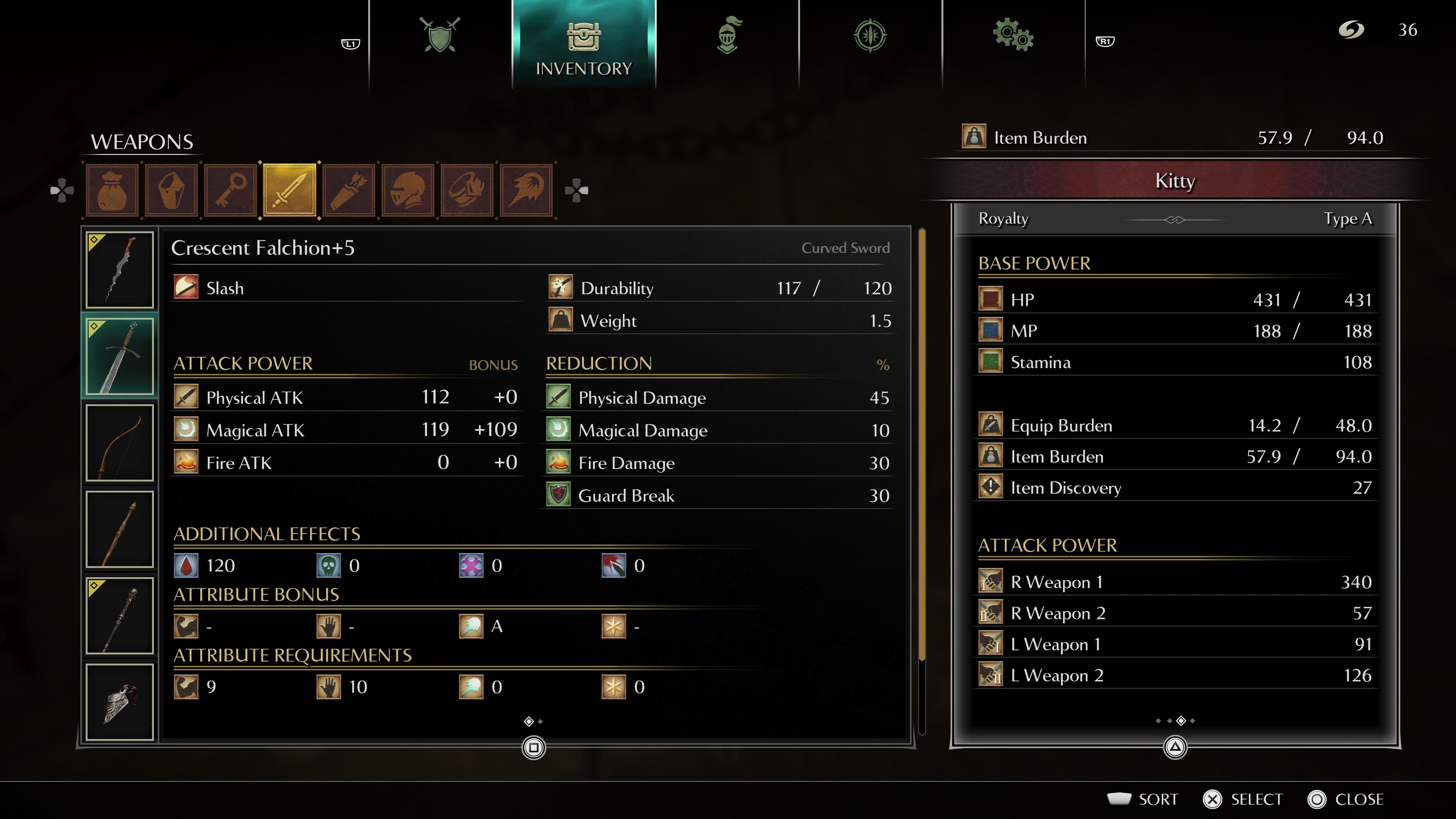Demon's Souls weapon stats, how to increase damage, scaling explained and more
Make sure you understand how your weapons work in Demon's Souls

Understanding how Demon's Souls weapons stats work, and how scaling improves them, is crucial if you plan on staying alive. The best Demon's Souls weapons can scale with different stats, so raising things like magic, dexterity or strength can be key to getting a powerful tool, or wasting its potential - if your damage output isn't increasing as you level up your character, then you're probably buffing a stat that your weapon isn't affected by. These relationships can change with every pieces of gear you find and create some unusual relationships between weapons and characters.
We're going to explain all that here, and the ins and outs of how weapons work, how to understand their stats, and how it ties to character progression. For example, if you build a magic heavy character to max out a certain weapon you might find other options effectively shut out, unless you want to take the time to max another stat. What we're about to cover will hopefully prepare you for the battle ahead and make sure you understand the numbers behind axe or sword so you can make the best use of them.
How to understand weapon stats in Demon Souls

Before you get to the point where you pick a weapon and upgrade it, you need to understand how to read their stats and what all the numbers mean. This can greatly impact which weapon you ultimately choose to go with, though it shouldn’t be the only thing you consider (how a weapon feels is important, too).
From the Equipment screen, press X and then square on a piece of gear, and you’ll come to a lengthy stat page with a ton of numbers that all represent something. Here, we’ll detail what each section means and how to read them, starting at the top.

Demon's Souls Damage Type and Weapon Type
The very first thing you’ll see beneath the weapon’s name is the damage type, which is denoted by four signs that represent Normal, Blunt, Slashing, and Piercing (in order from left to right). In essence this will tell you what kind of animation your weapon will have when used. It might not seem significant, but the kind of attacks you’ll dish out - whether they’re fast, Piercing strikes, or slower Blunt attacks - can greatly impact how an encounter with an enemy will play out. Some enemies are more vulnerable to different damage types, and in some cases an apparently weaker weapon in your arsenal can do more damage to creature more susceptible to that damage type.
To the right of that is the weapon type, signifying the category of the weapon - like a bow, large sword, or axe. Don’t get too hung up on this section, as it’s mostly there for categorization.
Physical Attack
Next is Physical Attack damage and this is something you’ll want to always be aware of because it’s one of the most important factors that determine your weapon’s overall effectiveness. The first number to the right of Physical Attack is its base damage and the number to the right of that represents any bonuses you might have from your character’s stats. This is called Scaling, which we’ll get into a little further down, but for now, just know that your weapon’s total physical damage output is determined by the two numbers next to Physical Attack. Keep in mind the bonus can be negative if your stats are low.
Magical and Fire Attack
Following that are Magical Attack and Fire Attack - both of which feature a base level of damage on the right and any stat bonuses on the left - just like the Physical Attack attack stat. Certain weapons deal Fire or Magical Attack damage in addition to Physical damage, while others are geared towards one of those stats. When starting out, you’ll likely want to focus solely on Physical Attack damage output, but later on, you’ll get into weapon enchantments or catalysts that are used to emit magic - which tie to Magical or Fire Attack stats.
Stat Bonuses and Special Effects

Stat Bonuses we’ll cover in more detail in a section of its own since it’s much more complex. For now, however, just know that your character’s stats can impact the effectiveness of your weapon.
For Special Effects, this section will let you know if your weapon deals Bleeding, Poison, Plague, or Critical Strike (from left to right). Some weapons won’t have a Special Effect, but others like the Mercury Dagger above, for example, have a Poison stat bonus - which in this example is the 360 you can see listed - which stacks with the Physical Attack stat, as well.
Damage Reduction % and Guard Break Reduction

The next two stats, Damage Reduction % and Guard Break Reduction go hand-in-hand. Damage Reduction % represents the percentage of an attack you’re able to block. Keep in mind, you can guard or block with a standard weapon, but this category is typically meant for shields. The two numbers next to this stat represent Physical Damage reduction and Magical Damage reduction.
Try to get Physical damage as close to 100% as possible, at least at the start of the game. In later sections, you’ll want to shift your focus to shields that have 100% damage reduction for both Physical and Magical attacks. For instance, the Dark Silver Shield above has 100% Damage Reduction for Physical and Magical Attacks, meaning you won’t take any damage while blocking with it (until your guard is broken).
As for Guard Break Reduction, this represents the amount of damage you can withstand before your guard is broken. The higher this number, the more damage you can withstand from a single blow. Using the same Dark Silver Shield as an example, it can withstand 50 damage before your guard is broken, at which point your Stamina will deplete and you’ll begin taking damage. As long as you manage your Stamina and back away when it’s low, you won’t have to worry too much about the Guard Break Reduction.
Stats Needed
This section is extremely important because it tells you what character stats you need to have in order to wield a particular weapon. The symbols from left to right are, Strength, Dexterity, Magic, and Faith. You have to at least match the stat requirements denoted in this section to use a weapon. For example, the Knight’s Shield has a Strength requirement of 16, meaning your character must have at least 16 Strength to use it. More powerful weapons have higher stat requirements, like the Blessed Great Sword, which requires 26 Strength to use.
Durability and Weight
Demon’s Souls features a Durability system, in which your weapons can break if they’re used too much. That is indicated by the Durability section, denoted by “current/max.” As you use your weapon or shield, the number on the left will deplete. You can repair weapons at The Nexus.
Weight is an important thing to consider, as well. Typically stronger weapons will weigh more and you’ll notice a difference in how your character moves when using it. Depending on your play style, this might make a huge difference in how you go about tackling certain situations. For us, we like as much mobility as possible, so we try to steer away from heavy weapons for the most part.
To the right of this is the Item Burden section, which tells you the weight of everything you’re carrying out of the total capacity you’re able to carry. If you’ve played games like Skyrim, you’ll be familiar with this mechanic.
Overall weapon stats

Many of the stats we covered are complicated and can be overwhelming to understand at first. To make things easier, look at the list of stats on the right side of the menu, and you’ll get an overall idea of total damage output for a weapon. For example, with the Meat Cleaver above, it features a total damage output of 433 based on Physical Attack, Magical Attack, and the scaling. This is much easier to read than trying to add up each of the weapon’s stats individually.
How Demon’s Souls weapon scaling works

Scaling is a nuanced, yet essential part of how weapons work in Demon’s Souls, so we wanted to devote a whole section to it. Next to the Stat Bonuses are four symbols that represent Strength, Dexterity, Magic, and Faith (from left to right). A weapon that features scaling will have at least one letter next to one of these symbols, which represents its rank.
The letters in order from best to worst are S, A, B, C, D, or E. The better the letter, the more of a stat bonus you’ll get when using a weapon. There’s an entire formula that determines how much of a damage boost you get from each letter, but for the purposes of simplicity, all you need to know is that your weapon’s effectiveness is enhanced based on your character’s stats - and the amount of enhancement is dictated by the letter that corresponds to that stat.
Let’s look at the Tearing Flamberge above, as an example. It features a Stat Bonus of E for Strength and S for Dexterity. This means you’ll gain an ever-so slight boost to its Physical Attack, the higher your Strength is - and a major boost, the higher your Dexterity is. In this case, if we leveled up our Strength or Dexterity, the weapon will have a higher damage output. Though, with this weapon, we’d recommend to focus on leveling Dexterity since it will have a greater impact than Strength. You’ll want to take all of this into consideration when determining your build and how to level your character.
Scaling isn’t the only way to enhance your weapon.You’re also able to upgrade your weapons, which we’ll cover in a separate guide. For now, just know that the base Physical Attack (or Magic Attack, depending on the weapon) will increase as you upgrade your weapon, so pay attention to this when visiting the Blacksmith.
Weekly digests, tales from the communities you love, and more
Joseph loves Nintendo and horror games. With the Nintendo Switch, he's ready to get spooky anytime, anywhere. He specializes in covering Call of Duty: Warzone and action RPGs like Dark Souls, so you can bet he's looking forward to Elden Ring, the brainchild of George RR Martin and Hidetaka Miyazaki. You can find Joseph's work at GamesRadar, Digital Trends, Inverse, and PLAY Magazine. When he's not writing about video games he can usually be found petting his cats and listening to some Progressive Metal. He thinks Meshuggah is tight.



